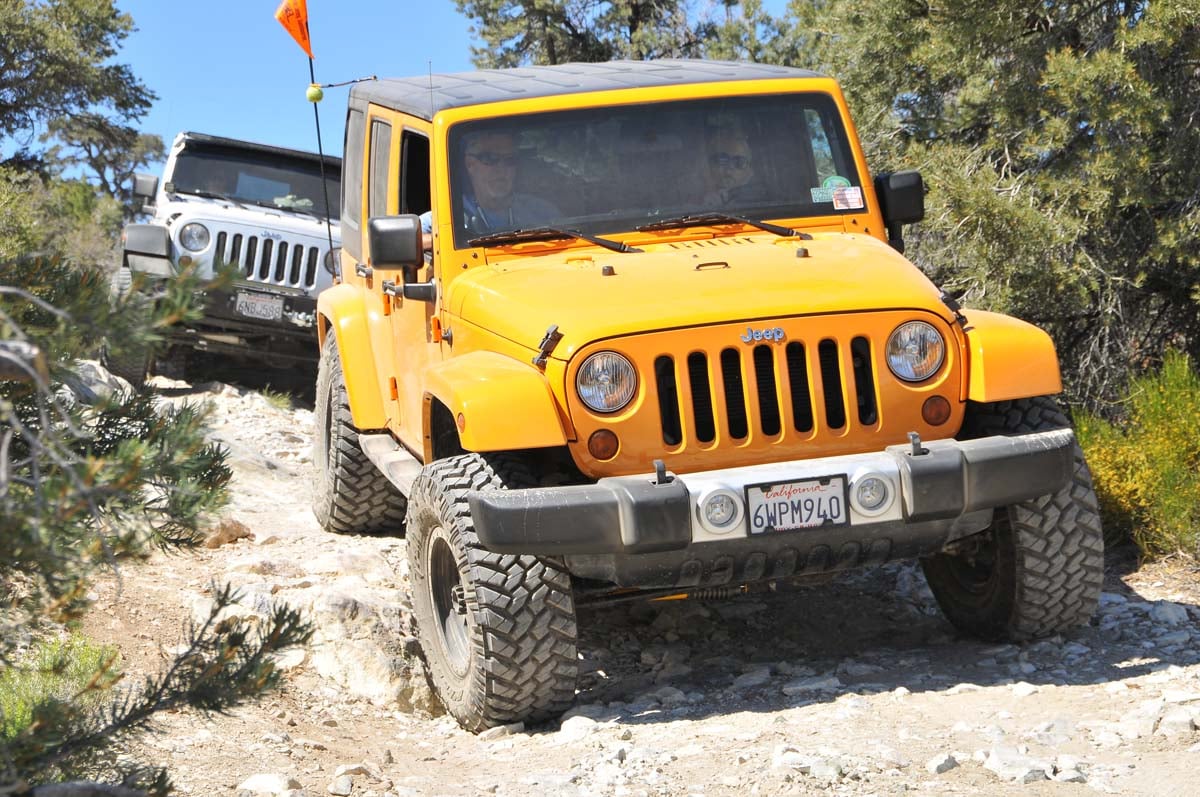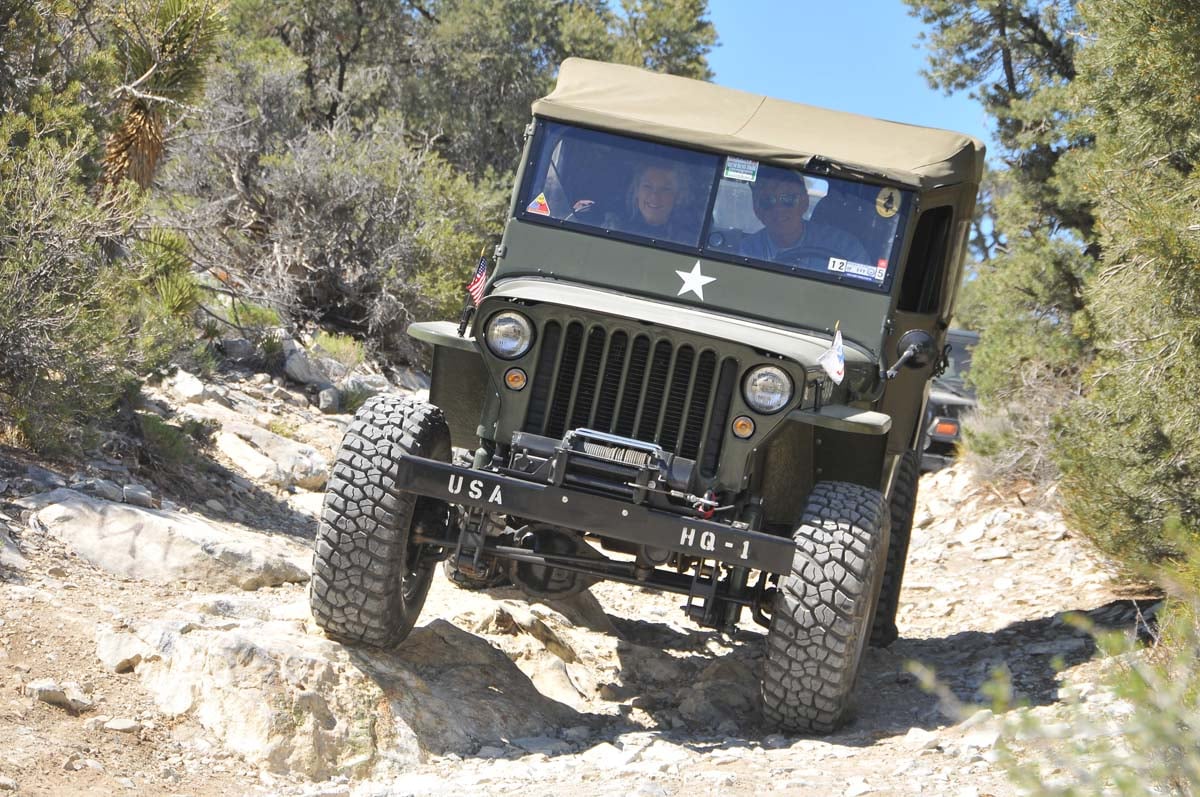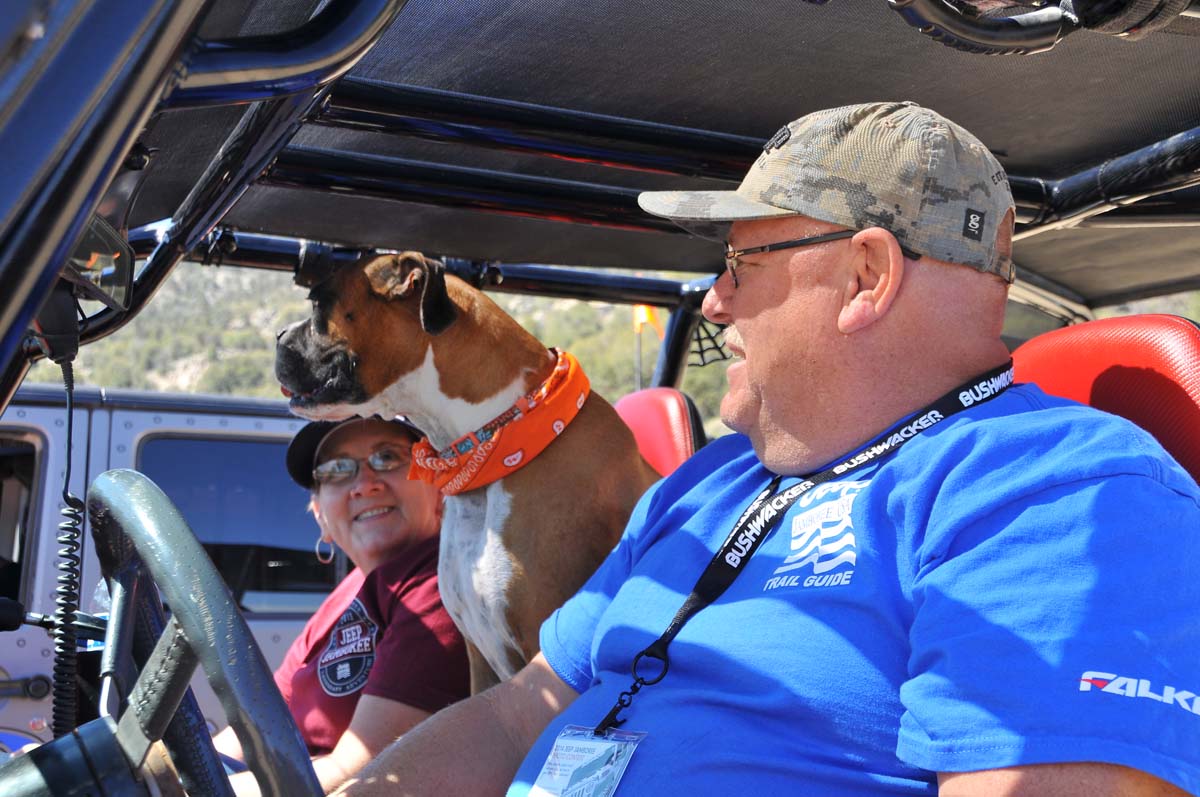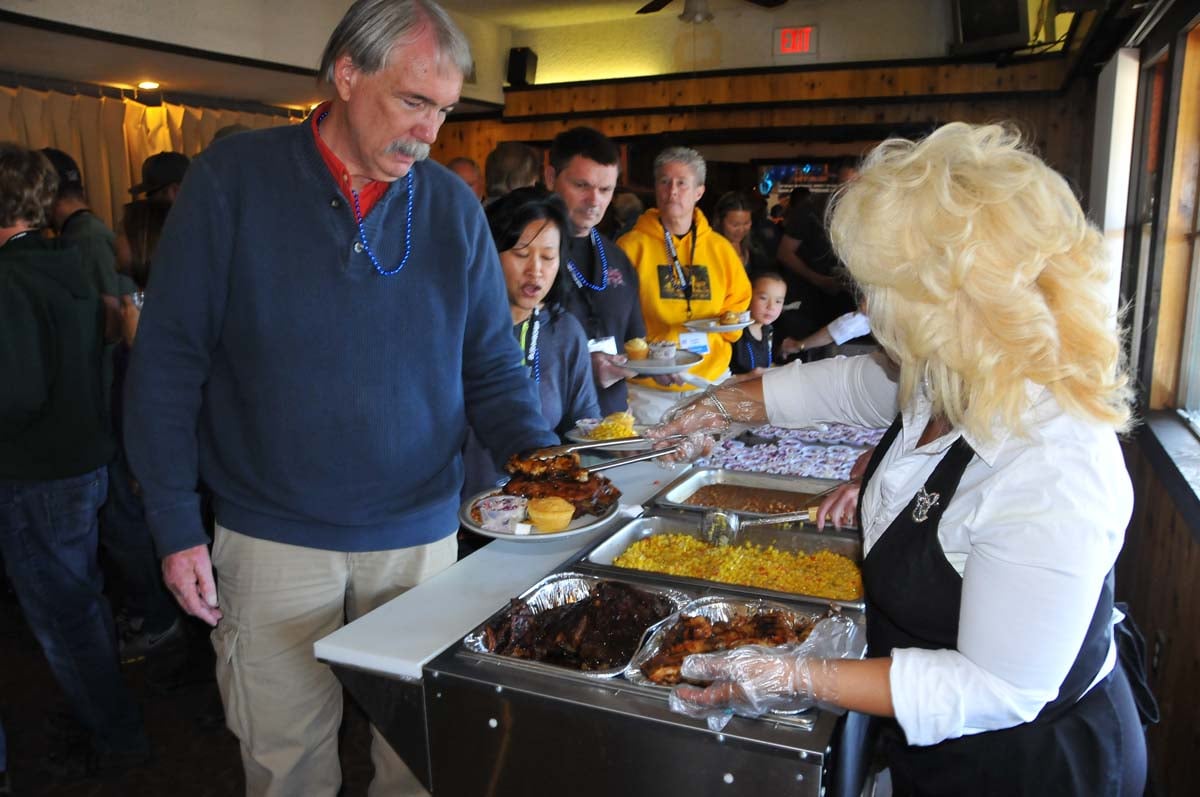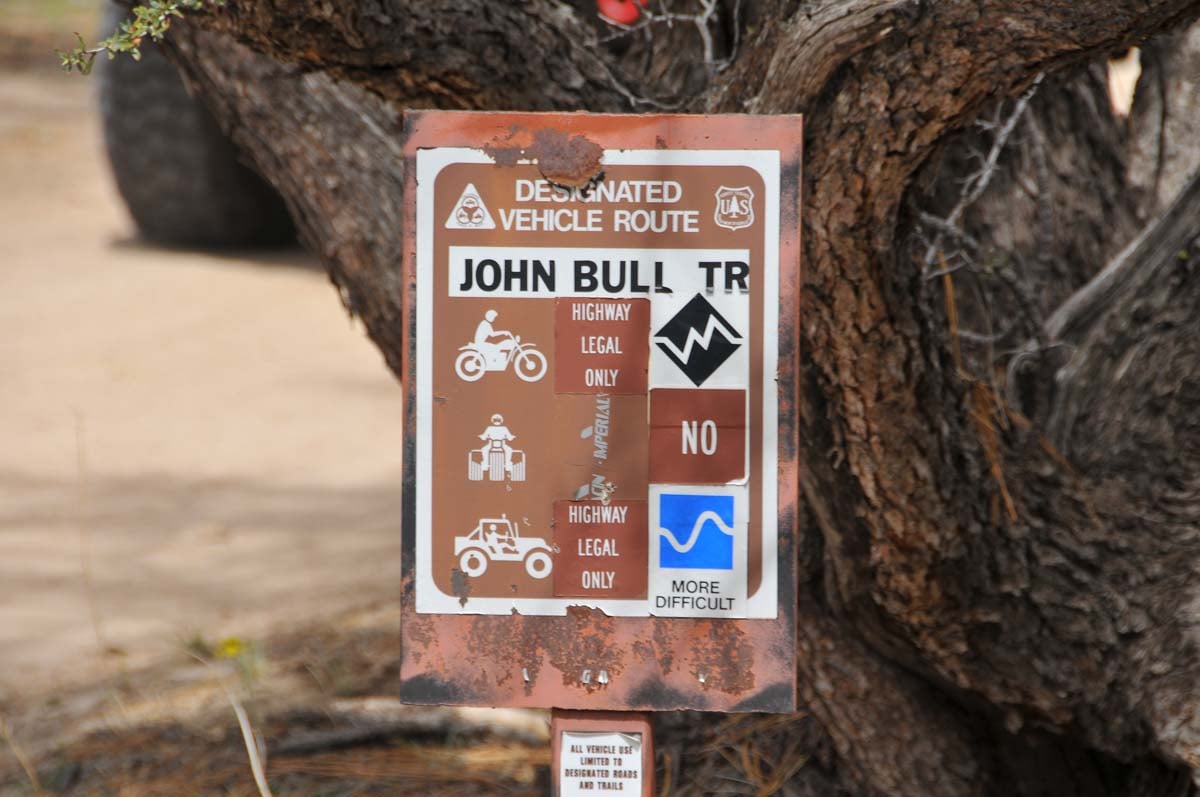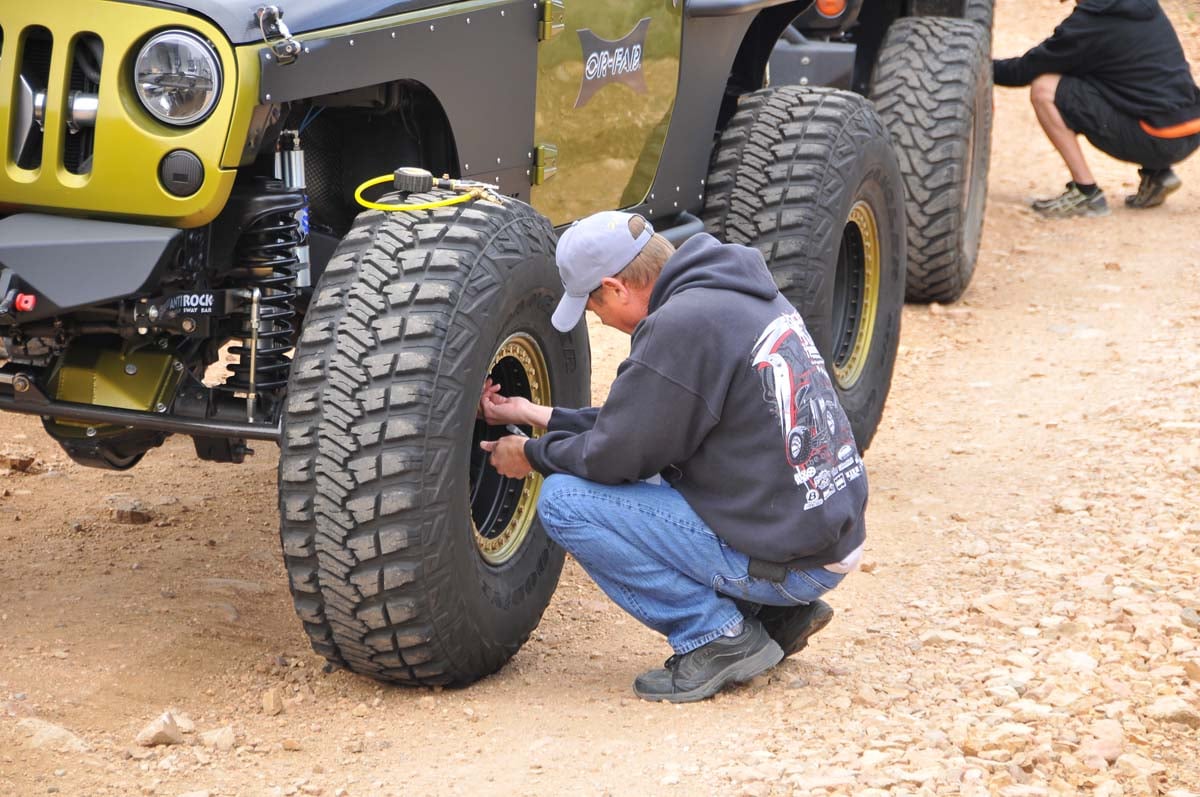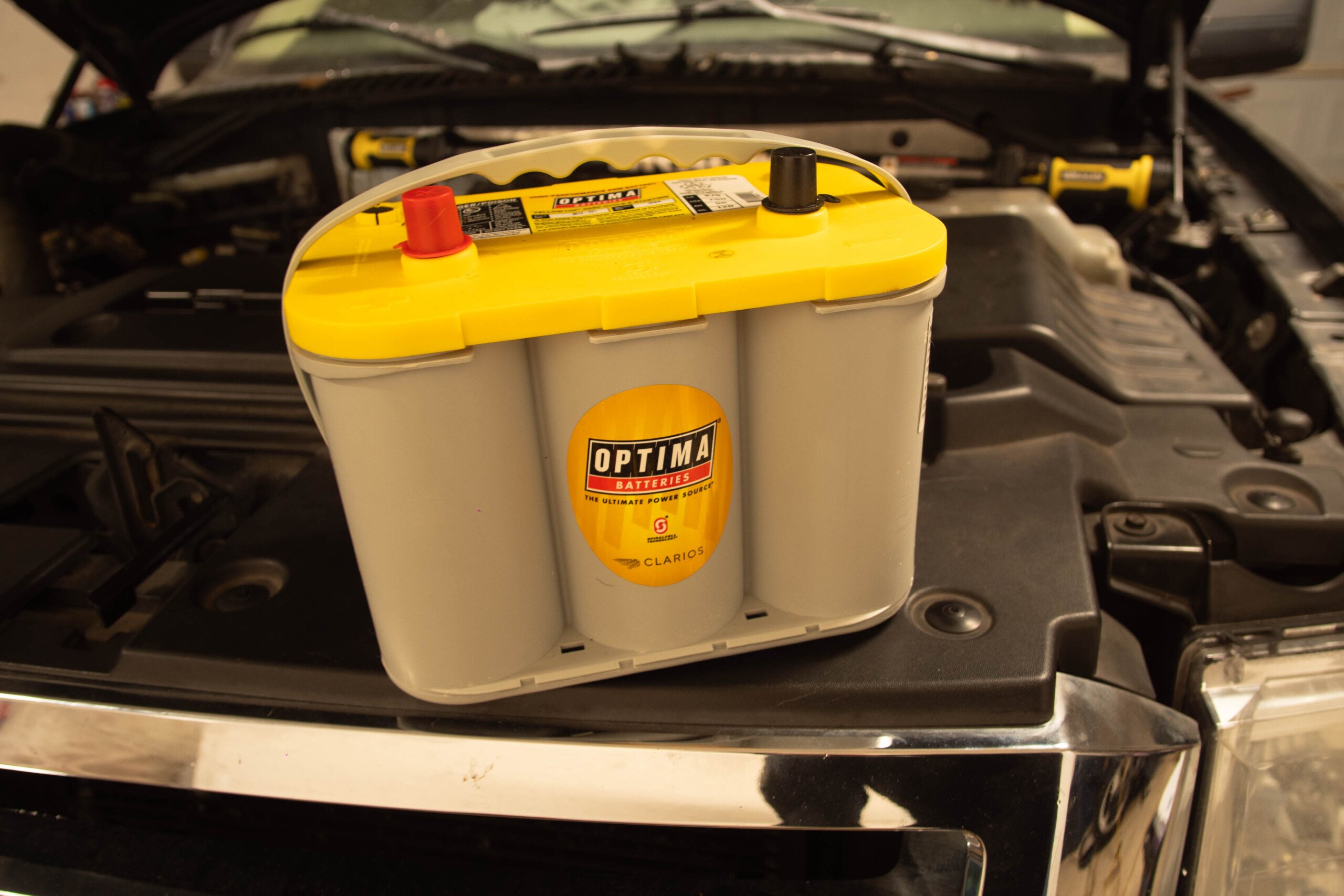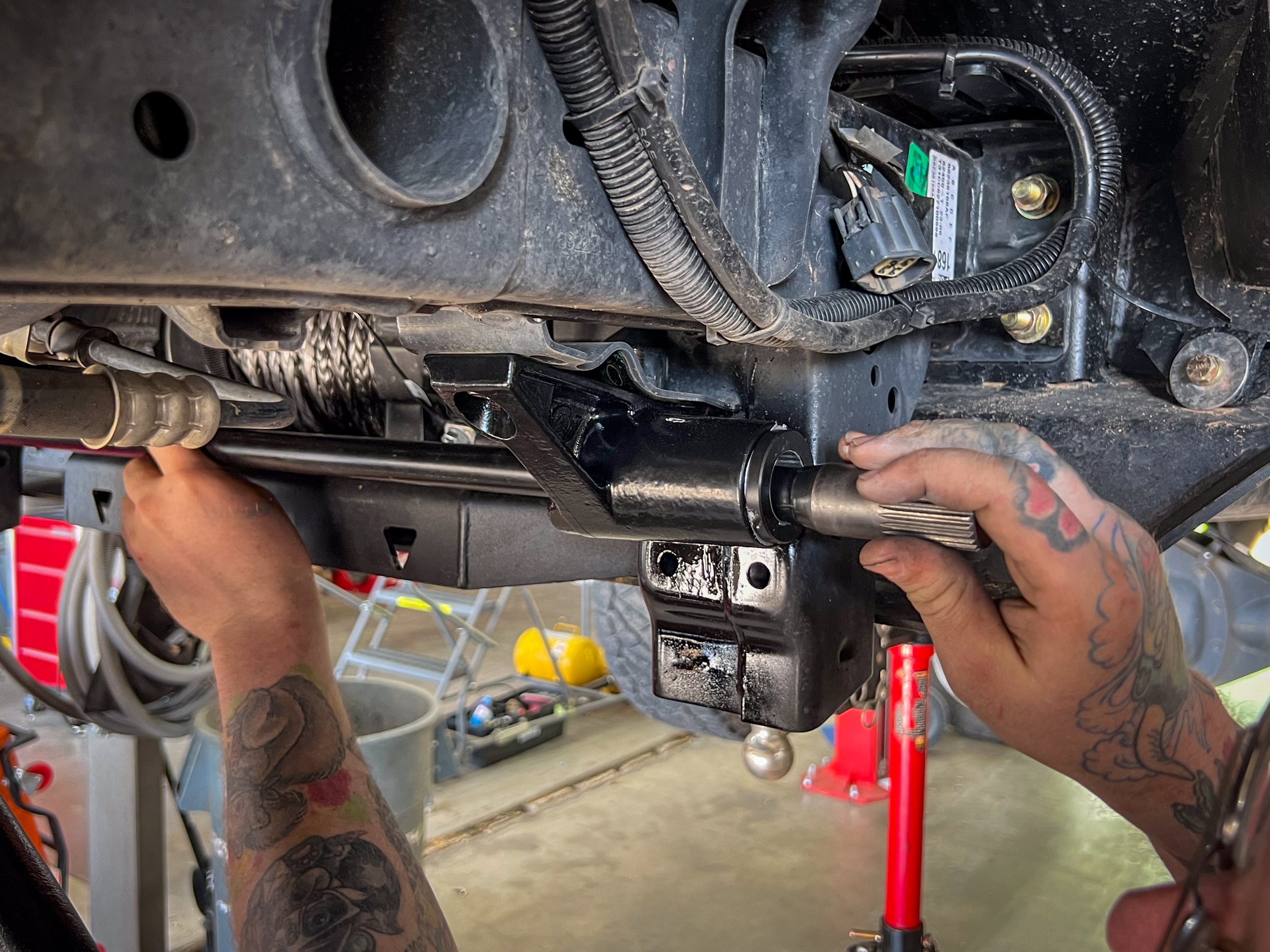If you’re an experienced hand or an off-road newbie, the Jeep Jamborees are an experience worth taking in. From California to Maine, these off-road trail events offer an organized club-like atmosphere that allow four-wheelers to band together for fun, frolic, and wholesome off-roading. Each typically lasts an entire weekend, and sometimes three days starting on a Friday, depending upon location and length of the trails involved.

The gatekeeper to the John Bull Trail quickly establishes if your vehicle is worthy of going any further. Here, Don Alexander breezes through in his TJ.
Jeep Jamboree USA puts on 30 family-orientated 4×4 events a year with thousands attending. Entry fees vary by event, but families of four typically pay $500 to $750 to attend. Some events include breakfast, lunch and dinner while others only include dinner.
Either way, what participants get for their money is a safe and guided trip, with the security of knowing there are mechanics and medics in attendance, over trails they might not have wanted to attempt on their own, and camaraderie that you can’t find elsewhere. Many lifelong friendships have blossomed over a Jeep Jamboree weekend.
First Run
In case you’re not familiar with the Jeep Jamborees, these off-road treks date back to 1953 when the late founder Mark Smith organized the first Jeep Jamboree by voyaging across the Sierra Nevada Mountains along the Rubicon Trail. That trip saw 155 Jeeps participate. In 1982 Jeep Jamboree USA was formed and its growth since has been impressive for a family-run company.
While talking to the Jeep Jamboree staff about the demographics of its customers we were not surprised to find that on average 38 percent of each Jeep Jamboree’s participants were first-timers to the Jamboree event. What did surprise us was how many multi-time participants they have. This group is experienced enough that they could certainly just go out on the trail themselves or with a buddy, but they choose to spend the money and come out with the Jeep Jamboree people because they have such a good time.

Rebel Off Road was one of the event sponsors, but they didn’t just sit behind a table. Rebel brought several excellent Jeeps to the event and participated enthusiastically.
Many Jeep Jamboree attendees are business owners who are pressed for time and they don’t want to do all the planning. Paying someone else to figure out the dates, the route, and the food can be an attractive option when you’re slammed for time. For those folks, a few hundred bucks isn’t going to squeeze their wallet. We decided to tag along with the Jeep Jamboree recently and chose its trek through the Big Bear Mountain region of Southern California.
Living Large
Jeep Jamboree participants might select this event for a number of reasons, but one of them is that you can take a trip back in time and become part of California’s Wild West. By getting off the pavement you can travel along miles of old logging roads created when this area was one of the chief sources of lumber for most of Southern California. More than a century later, the roads have become rock and boulder strewn trails that provide challenging off-road adventure and offer spectacular views overlooking Big Bear Lake. If you travel to the edge of the range’s northern crest, you can look thousands of feet down upon the amazing California High Desert.
A multitude of vehicle and trail types are commonly seen on the Jeep Jamborees.
The San Bernardino Mountains form the highest range in Southern California with San Gorgonio Peak at 11,503 feet in elevation, while the lake sits far below at 6,750 feet in what’s known as Bear Valley. The region was populated by the indigenous Serrano for more than 2,000 years, and they referred to the territory as “Yuhaviat” which translates into “Pine Place.” The Serrano lived in small villages near fresh water sources and subsisted on local plants and game found in the valley.
Although populated with a large number of native grizzly bears, the Serrano viewed them as ancestors and did not eat the meat or wear the fur. The first American settlers came into the Big Bear area in the mid 1800s as part of a group looking for “Indians” that had been raiding ranches down in the San Bernardino Valley. They ended up abandoning the search when they saw the large numbers of bear in the area. The hunting of bear continued in what they called Bear Valley (because there was not much of a lake until 1912 when a 72-foot multiple-arch dam was built) until virtually no bears were left in the area.
The Big Bear Mountain region was also bountiful for another resource: Gold. In 1859 the area became extremely popular with gold prospectors. One bear hunter, William Holcomb was said to have found a vein of quartz that was flecked with gold while tracking a bear he had wounded. Upon that report, the Bear Valley gold rush ensued. They named the area Holcomb Valley and it soon became the most populated area in San Bernardino County.

When you’re on a tough black diamond trail it’s always good to have other vehicles around. Jeep Jamborees provide dozens of buddies.
Trails O’Plenty
The San Bernardino Mountain range runs east/west (transverse), unlike most mountain ranges in the U.S. There is still much left of the rich mining history in the area and if you go on the right trail you can see the remnants of the 40-Stamp Mill. But the real treasure today in the Big Bear Valley area is the incredible four-wheeling. The trails range from ratings of 3 to 9 with terrain that will challenge even the most experience off-roader. There are five “black diamond” trails in Big Bear (Gold Mountain Trail, Heartbreak Ridge, Holcomb Creek Trail, Horsethief Flat Trail, Lower Larga Trail) and one “double black diamond” trail (the well known John Bull Trail).
Check-in for the Big Bear Jamboree starts the night before the event and it always turns into an informal party. Vendors show off their wares, while participants start to get to know each other, or rekindle relationships forged at a previous event. Before the trail ride begins, the Jeep Jamboree staff inspects each vehicle for safety and required equipment and then assigns a color group based on the perceived capabilities of the vehicle (not the experience level of the driver).

Good-natured pets are always welcome on Jeep Jamborees (top left). Lots of good vittles are one of the many side benefits (top right). The Elks Club was the hub of activity for the 2014 Big Bear Jeep Jamboree (bottom).
The orange and white groups are for mostly stock vehicles. The green and yellow groups are for rigs with mild lifts or modified clearance, and one locker is required. In the blue and red groups you have to have a three- to six-inch lift, lockers or limited slip differentials, skid plates, aggressive all-terrain tires and disconnected sway bars. The organizers don’t force you to go on a trail that’s tougher than you would like, and you are free to choose any run that suits you and your Jeep’s capabilities.

Lunch breaks on the trail lead to more socializing. Some include lunch, but the Big Bear Jamboree is a “bring your own” trip.
One thing they won’t tolerate on the trail though is alcohol. So if you bring it, leave it in camp, your moho or trailer, or back at the hotel. Get caught drinking and you will not only be removed from the Jeep Jamboree but you will never, ever be allowed to return. You can imbibe at the party.
Dinner Bell
At the end of each of the two days of trails there’s a banquet-style dinner and all the different color groups sit at their own table. We were impressed with the tastiness of the food. There are no rubber chickens at this trail ride. At our event a friendly rivalry sprouted between the groups with the loudest table proclaiming to be the best. We bet this is a regular occurrence at every Jeep Jamboree as the staff seemed to be spurring the teams on.
It’s kind of a funny sight to see adults screaming “Blue, Blue, Blue!” over and over to try and drown out the white team (or whoever is shouting at the moment). It’s all good fun and adds to the flavor of the event. But that’s part of what makes any Jeep Jamboree an outstanding experience.
Signs such as this (left) in the Big Bear area let you know what trail you're entering as well as its difficulty rating. Airing down your vehicle's tires for better traction offered a distinct advantage on the rugged terrain.
As we said before, the camaraderie is a critical component and some people end up making friendships that last for years. We met many that had connected at the Big Bear Jeep Jamboree years before and have made it an annual get-together for years running.
If you’re looking for challenging four-wheeling with a fun bunch of people, you can’t go wrong with a Jeep Jamboree. Check out the roster of events and get more information from Jeep Jamboree USA by calling (530) 333-4777 Extension 18 or going online at www.jeepjamboreeusa.com.

